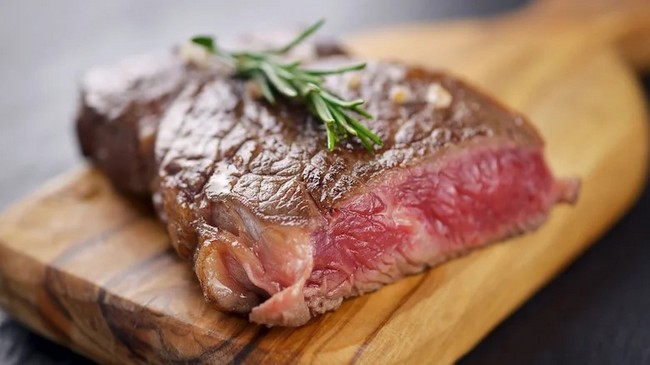✕

Column: industry Tag: blue steak,cooking Published: 2024-10-11 15:13 Source: www.mashed.com Author: NAOMI KENNEDYOCT

SosnaRadosna/Shutterstock
If you hear someone order a "blue steak," the literal meaning of those words might come to mind. However, this isn't a "green eggs and ham" situation. "Blue" refers to a steak that is cooked rarer than rare so that it's just lightly seared on the outside and still red in the middle.
A Mashed survey found that only 6% of steak eaters prefer their meat cooked rare. So, you may be curious if a blue steak tastes good, let alone if it's even safe to eat one in the first place. Studies show that bacteria such as E. coli are eliminated from a steak's exterior during the cooking process, so the answer to the second question is "yes." As for if it tastes good, well, that's ultimately up to personal preference. However, blue steak proponents like celebrity chef Nigella Lawson praise it for its tenderness and melt-in-your-mouth texture.
That said, proper preparation is the key to ensuring a blue steak is both delicious and safe to consume, and Porter House executive chef Sean Thompson has a few tips. Speaking with Mashed, Thompson explains that the key to preparing a blue steak is to allow it to sit out and reach room temperature prior to cooking. "This makes sure that it cooks evenly and is not cold in the center," he explains.
High heat is crucial when cooking a blue steak

Photo By Cathy Scola/Getty Images
When cooking a blue steak, Sean Thompson has just the technique for the job. "[Use] super high heat in a cast iron pan, which gives you great caramelization without overcooking," Thompson advises. And when he says, "high heat," he means it! The chef explains that failing to do so is one of the biggest mistakes someone can make when preparing a blue steak, so make sure to give the pan plenty of time to preheat. A good way to check if it's ready is by dripping a few drops of water onto it. If the water evaporates immediately, the pan should be good to go.
To avoid another classic steak mistake, make sure to pat your steak dry with a few paper towels before seasoning it. Excess moisture can prevent you from getting a good sear, one of the key components to perfectly executing a blue steak. Once your steak is dry and seasoned, and the pan is nice and hot, the cooking process can begin.
Thompson suggests an internal temperature of 115 degrees Fahrenheit for a blue steak, which should only take about a minute to achieve on each side and can be monitored with a meat thermometer. Don't forget to lightly sear the sides of the steak for a few seconds, too, to get that satisfyingly crisp caramelization all around.
Previous:Is There Any Difference Between Ketchup And Catsup?
Next:USDA launches framework to tackle unfair pricing in beef sales and ease access to seeds
Hot key words
Hot Products
Popular Vendors